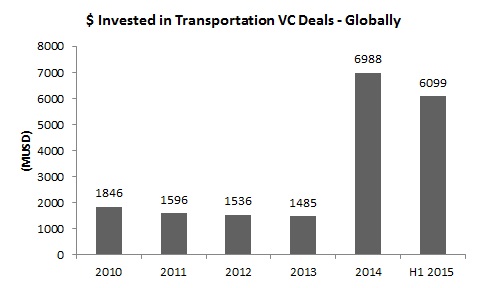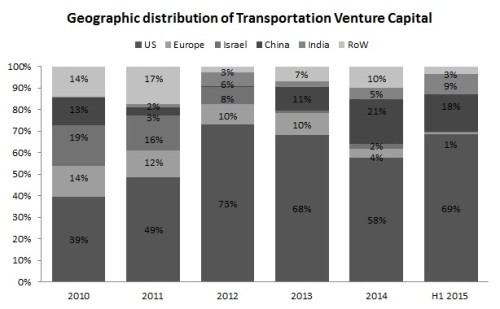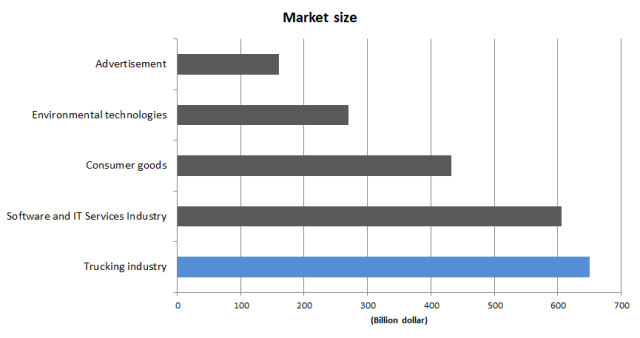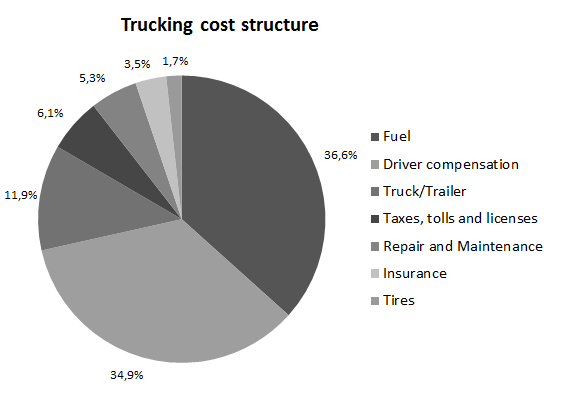Photo credit: JD Hancock
Corporate Venture Capital is growing and 2015 will probably be the biggest year since 2001!
50(!) new Corporate Venture Capital groups have made their first investment during the first eight months of 2015 according to CB Insight.
NVCA reports that in the first half of 2015 Corporate Venture Capital groups have invested $4 billion into US based Start-ups across 431 deals. That means that almost 20% of all deals had a Corporate VC involved. For more stats and thoughts from NVCA, see president Bobby Franklin’s post.
Corporate Venture Capital growth means that more people are getting into the profession. Being an active CVC the last five years and having discussed best practice with many entrepreneurs and CVC colleagues over the years I wanted to share a couple of behaviors that I believe are important to be successful.
- Treat entrepreneurs as your most valued resource – which they are
This should be a given, however I’m not sure it’s always the case. The entrepreneurs we invest in are without competition the factor that will make or break the success of us as a CVC. Unless you develop a trusting relationship they won’t share knowledge, spend time on working out deals with the mother company and so on. Getting access and investing in the best entrepreneurs is obviously a crucial and non-trivial part of a great CVC and reputation travels very fast in the small relationship driven Venture industry. A key part of treating them right is being careful with their time. It takes time to learn what activities between portfolio companies and the mother company that creates value. Make sure that the activities are constantly evaluated from a value vs time perspective and don’t push portfolio companies into joint activities that isn’t in their best interest. It is sometimes necessary for the portfolio company to help us convince internal stakeholders during diligence and for new rounds. That’s a part of the game, just be clear with the reason and what’s expected.
If you’re Portfolio Company CEOs don’t give you good reviews – you’re pretty much doomed.
- Keep focus on the external world and avoid getting trapped in endless internal meetings
It is easy to spend way too much time on internal meetings and hard to know what really is important. My rule is that unless there is a clear possibility for a new investment or a partnership with an existing company I try to avoid getting involved. I really think this is in the best interest of the mother company since our unique value add is bringing the power of external entrepreneurship to the company, not be internal consultants/PowerPoint creators.
- Don’t meddle with Portfolio company strategy
The debate about whether VCs in general add net value or not is interesting and needed. The amount of detailed knowledge needed to advice on general business strategy is really high and since board members/observers don’t think about the business 24/7 it is unlikely that they can point the company in the strategic right direction. This is particularly dangerous with CVC’s because they have industry specific experience and clout, however those experiences most often come from the large company perspective and often translate poorly to the Start-up world. If you as a Start-up use industry best practice you will most likely not win, Start-ups need to compete in new ways. That’s also what makes them attractive to Big companies.
However…
- Contribute with industry specific information, introductions and credibility
Providing tangible things like industry research and facts, introductions within the value chain and credibility through association on the other hand can be highly valuable. Focus on providing these things rather than getting in to the trap of general business advice is hard but so important. Having a Fortune 500 company logo on your business card open doors that are much harder for entrepreneurs to open. Utilize this fact without shame and help the entrepreneurs to get a foot in the door. Have the confidence to stay quiet during general business strategy discussions, (which is really really hard), or ask probing questions that help them reflect. I am sure that many CVC practitioners could add significant value to portfolio company strategy but it is easy to get wrong and will take a lot of time. It is simply not a good way to spend time for a CVC. Advice that isn’t well thought through can, especially for a first time CEO, have disastrous effects.
- Do everything you can to make high potential collaborations between your portfolio companies and the mother company successful
It is HARD to get momentum for significant collaborations between portfolio companies and the mother company. Many times it sounds good on a high level during the diligence process but once you get down to the detailed level and actions it rapidly becomes complex. When you finally get traction in both organizations for a joint project with significant potential – work relentlessly to break down barriers that doesn’t have to do with the fundamentals of the deal itself. The classical example is a reorganization within the Mother company that suddenly makes the key people driving the project disappear and a new team needs to be brought up to speed. This is a situation where a CVC really can make a huge difference in getting the new Executives up to speed. Provide that continuity between the organizations. At the same time, don’t push collaborations that don’t make sense for both companies from a financial perspective, in order to understand this we believe that you need to be deeply involved but not controlling. It is a delicate difficult balance but when it works the results will be collaborations that drives themselves and create significant value for both companies. Similar to Venture return in general we have found that there are a few portfolio companies that create almost all strategic benefits – that is why nurturing and fighting for those potential partnerships is so important.
Looking forward to hear your thoughts!
Jonas Landstrom
@JonasLandstrom













